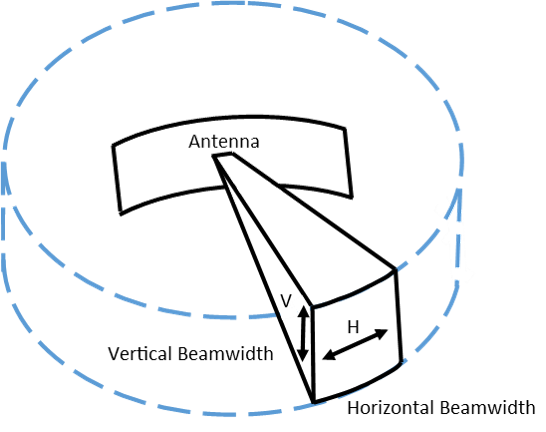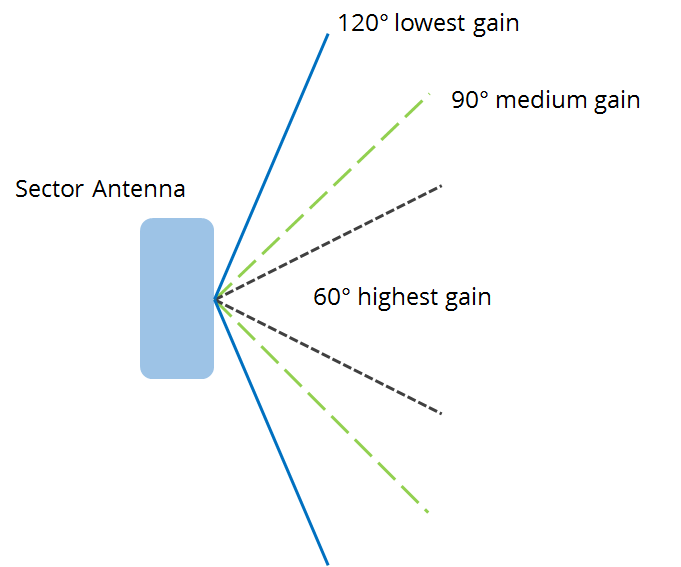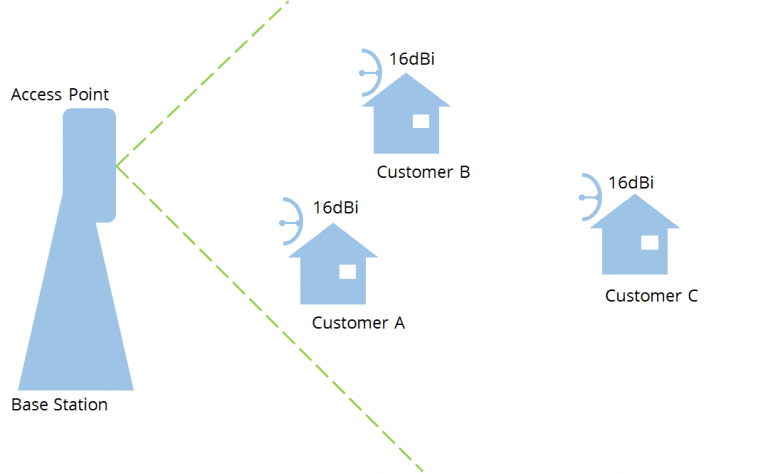Part 4 of 5: Introduction to Wireless Communication (Antennas)
- Megan
- Latest News
- 0 likes
- 3040 views
- 0 comments
In our previous blog posts, we have discussed the two components that make up outdoor wireless namely the radio and antenna.
Antennas are essential components of any wireless setup as they take a low gain, widely dispersed signal and directs and focus it into a usable beam. It is usually used with a radio transmitter and radio receiver. During transmission, a radio transmitter supplies an electric current oscillating at the radio frequency, to the antenna’s terminals, and the antenna radiates the energy from the current as an electromagnetic wave. In reception, an antenna intercepts some of the power of an electromagnetic wave in order to produce a tiny voltage at its terminals that are applied to a receiver to be amplified.

We have mentioned previously that antenna gain measures the efficiency and directivity of an antenna. To better understand the concept of antenna directivity, we need to have a look at the radiation patterns of antennas. Antennas radiate and receive across three-dimensional space, also known as polar plots. These patterns describe the power density and angle at which signals propagate from or are received by the antenna.

http://acceltex.com/2017/planes-gains-and-beamwidths-reading-radiation-patterns/
An important part to remember when installing outdoor wireless equipment is to have a precise alignment along the main lobe of the radiation pattern. By using the various link planning tools available, you will have an indication of an RSSI or receive signal strength indicator. When doing the actual installation this should be your guide for precise alignment of your antenna.
There are a wide array of antennas available, but understanding where to use the correct antenna is just as crucial for having an efficient network.
Sector Antennas
Sector antennas provide a set amount of coverage on the azimuth plane as defined by their main lobe beamwidth, varying between 45/60/90 and 120 degrees. These antennas are best suited for a base station in your point to Multipoint network, i.e. distributing wireless internet services to your subscribers.

Panel antennas
Panel or patch antennas split power across multiple metal elements. The radiated signal from each element combines in-phase to increase the directivity of the antenna. Panel or patch antenna is either separate or integrated (radio and antenna combined into one design). With relatively low gain like 15/16 or even 19dBI, these types of antennas are suitable as CPE or Customer Premises Equipment in your point to Multi-point solution.
Another important factor to keep in mind in a Point-to-Multipoint solution is called Antenna Reciprocity.

In our scenario, customers A and B are relatively close to the Base Station Access Point have excellent signal strength connecting with their 16dBi antennas. Customer C however, is at a greater distance away from the Base Station with the same 16dBI antenna, and getting a weaker signal. Because most of the Point-to-Multipoint solutions operate based on time, more time is spent on customer C because of retransmissions. A common mistake made is to increase the output power of either the AP or Customer C as a station, however, this just increases noise and interference and can have the exact opposite effect and decrease the performance of your network.
A better solution is to add a higher gain antenna that has a more focused beamwidth and greater propagation capabilities. By increasing the gain of customer c, will have an overall positive improvement on your network as less time is spent on retransmissions for customer c. This is known as antenna reciprocity, the bi-direction effect that an increased antenna gain can have on your network performance.
Omni Antennas
Omnidirectional or Omni antennas, in short, provide a 360-degree coverage in the azimuth (horizontal) plane. Omnidirectional antennas can be deployed in outdoor wireless scenarios as an access point, but due to its relatively short-range and lack in special filtering, especially in high noise environments, can also cause negative interference, and is recommended more for a Wi-Fi solution to multiple stations connecting within a given distance.

http://www.l-com.com/content/Article.aspx?Type=L&ID=10155
Dish antennas
Dish antennas, or also known as a parabolic reflector, are high gain, high directivity devices. A dish antenna is composed of two devices, a feed horn and a reflector. Both are positioned such that the reflected waves are in-phase and add together to produce again.
Dish antennas are typically best suited for a point-to-point link over great distances.
In our next and last part of this blog post series, we will recap all the information from our previous blog posts and how it all fits together.


Comments
View Comments